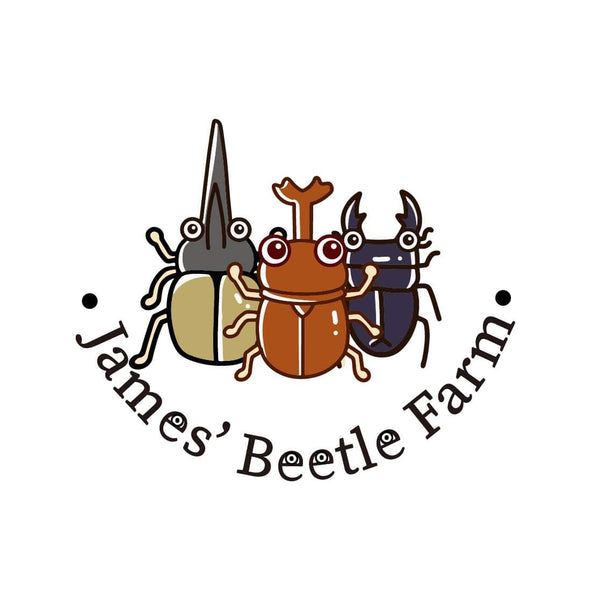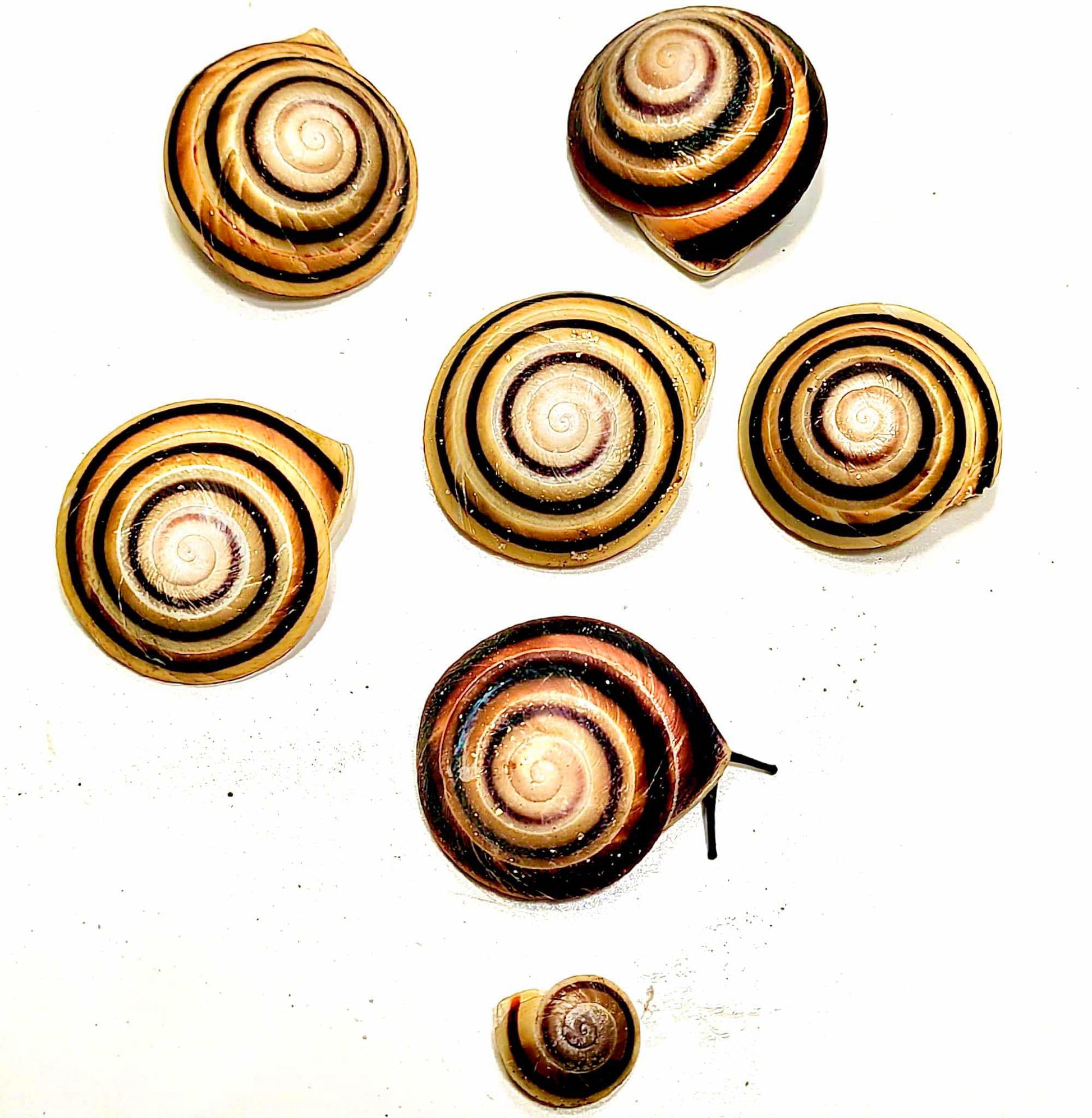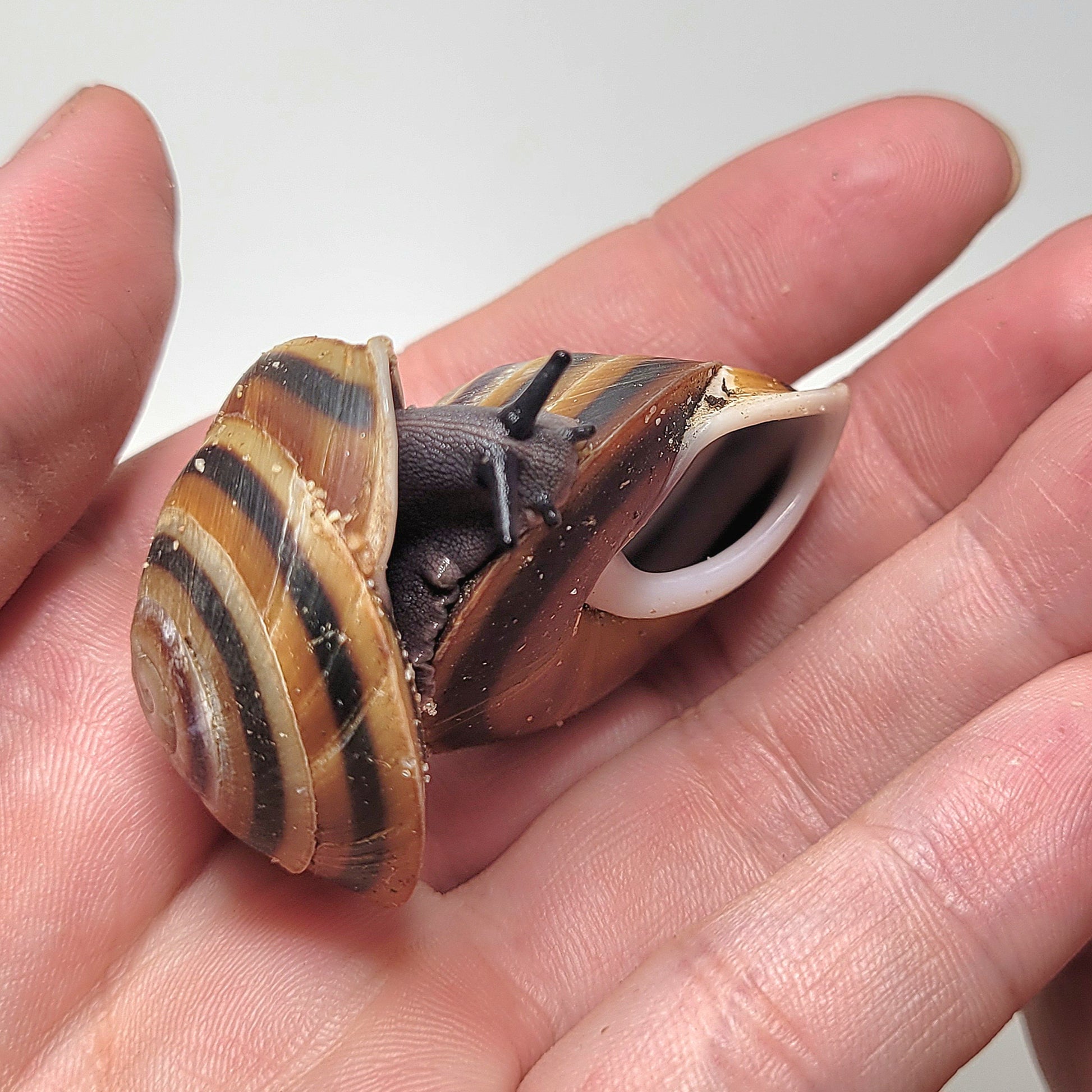James' Beetle Farm
Banded Caracol Snail (Caracolus marginella)
Banded Caracol Snail (Caracolus marginella)
Couldn't load pickup availability
Species Summary:
Diet: Flake soil, decaying plant matter, fruits, and vegetables
Lifespan: 5-8 years
Environment Requirement: warm and humid
Care difficulty: 1/10
Wild Caught / Captive Bred
Species Info:
Caracolus marginella is a species of terrestrial pulmonate gastropod mollusk belonging to the family Pleurodontidae. As a land snail, it plays an important role in its ecosystem by contributing to nutrient cycling through the decomposition of plant material. Native primarily to the Caribbean, particularly Puerto Rico and other parts of the West Indies, C. marginella is recognized by its distinctive shell morphology and adaptability to various terrestrial environments.
The shell of Caracolus marginella is one of its most distinguishing features. It is broadly discoidal, meaning it is flattened and rounded, and often displays a glossy appearance. The shell coloration typically includes a pattern of browns, tans, and sometimes lighter stripes or bands, which serve as effective camouflage in its natural habitat. This shell form allows the snail to navigate through leaf litter and narrow crevices with relative ease, offering both protection from predators and desiccation in dry environments.
Ecologically, C. marginella inhabits moist forest floors, gardens, and other humid terrestrial areas. It is often found under logs, rocks, and dense leaf litter, where humidity is retained. Like other land snails, it is primarily herbivorous, feeding on decaying plant material, fungi, and sometimes live vegetation. Its role in breaking down organic matter helps maintain soil health and fertility, making it an important decomposer species in its habitat.
Reproductively, Caracolus marginella is a hermaphrodite, possessing both male and female reproductive organs. This adaptation enhances its reproductive success in sparse populations, as any encounter with another individual can result in fertilization. The species lays eggs in moist soil, and development occurs within these protective environments until hatching.
While not currently listed as endangered, C. marginella can be vulnerable to habitat destruction, particularly from urbanization, agriculture, and deforestation. Additionally, the introduction of invasive predators, such as certain rodents or predatory snails, may pose a threat to its populations in some regions. Conservation of forested and moist terrestrial habitats is essential for the continued survival of this species.
In conclusion, Caracolus marginella is a notable representative of terrestrial gastropods in the Caribbean region. With its distinctive shell, ecological role in decomposition, and reproductive adaptability, it embodies the complex interactions between species and their environment. Continued study and habitat conservation will be vital in understanding and preserving this unique mollusk species.
Share






